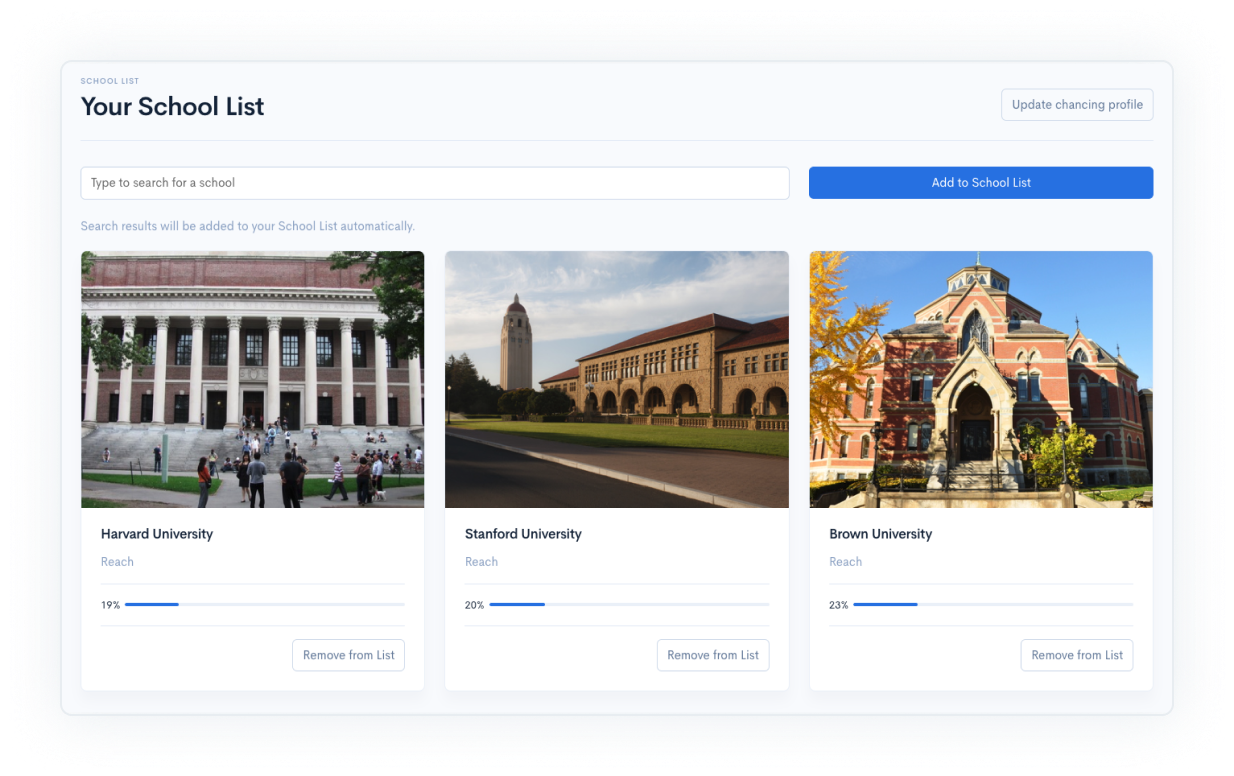
What schools should you apply to?
Long gone are the days of collecting data from a dozen college websites and storing your list in a spreadsheet. With CollegeVine, it’s easy to discover and organize a list of colleges that you’ll fall in love with. Plus – it’s 100% free!
With so many choices, where should you begin?
Over 5,300 colleges in the U.S.
There are over 5,300 colleges in the United States so choosing where to apply can be overwhelming for students and their families. Oftentimes, families are unsure where to begin.
The drawbacks of school rank suggestions
While college rankings or suggestions from college-aged friends can be a good start, there are many drawbacks to this approach that can lead to an unsuccessful admissions process. Below you'll read about the common mistakes people make when putting together a college list.
Finding your "fit"
Students can find schools across the U.S. based on "fit." Some of these factors include academics, selectivity, cost, student resources, program offerings, and personal preference such as location and student body size. Once a student understands the different factors and what's important to them, it's time to hone in on the specifics and create an ideal list of safety, target, and reach schools. You can put together your perfect school list for free with our school list builder.

